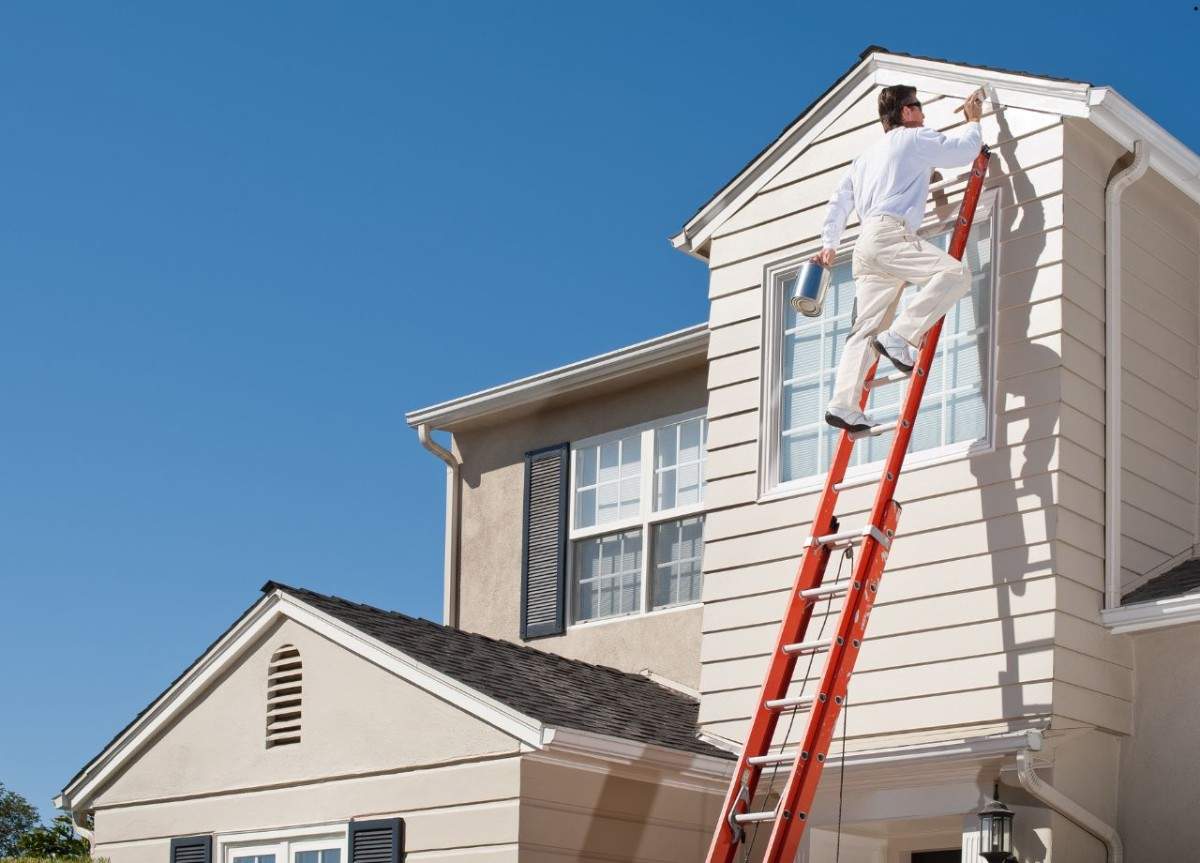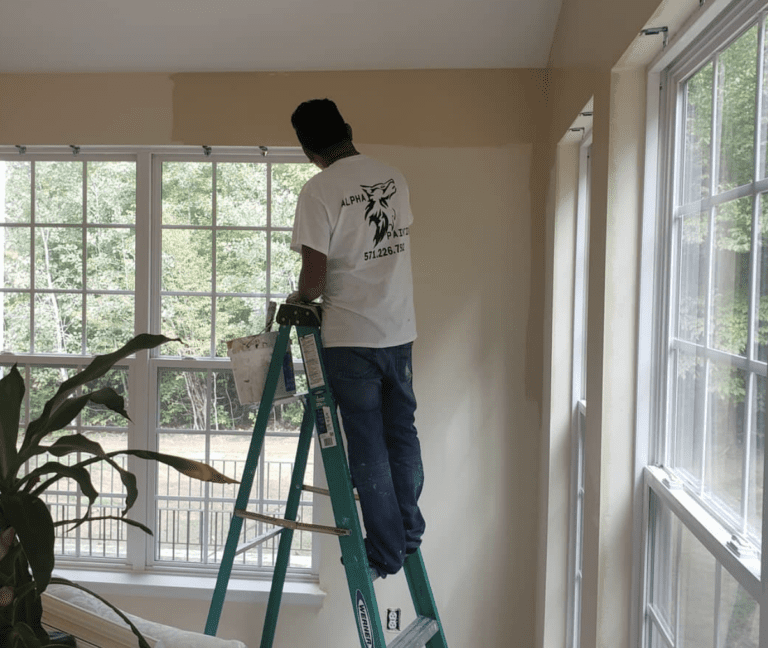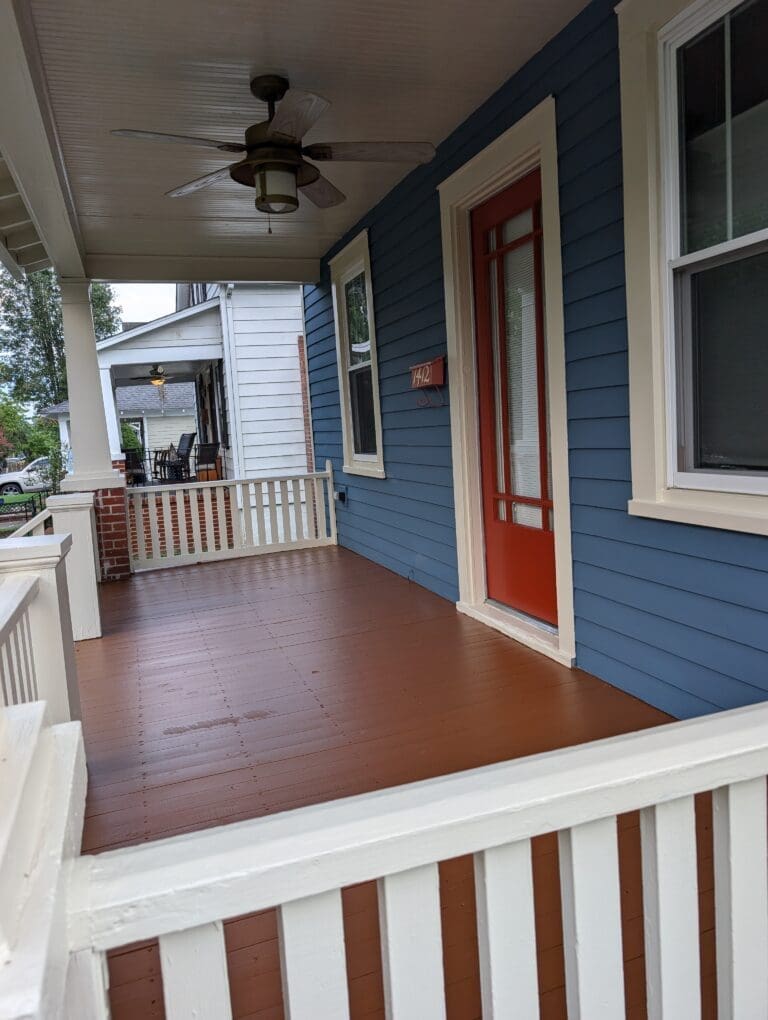Scaffolding for Painters: Safer, Faster, and More Precise Results
Scaffolding is more than just a platform—it’s a core part of how professional painters achieve high-quality results. Whether the job involves a two-story foyer, a commercial exterior, or the upper eaves of a historic home, working at height demands the right approach. Ladders have their place, but scaffolding often delivers a better combination of safety, efficiency, and accuracy. At Alpha Painting, we understand the value of getting the prep and paint right the first time, and that starts with using the proper equipment.
Table of Contents
Why Scaffolding Matters in Professional Painting
Painting isn’t just about applying color to a surface. It involves meticulous surface prep, precise cutting-in, smooth rolling or spraying, and careful attention to environmental factors. Scaffolding allows painters to move with stability and consistency, which directly influences the finish. It also reduces the physical strain that comes with reaching or leaning from ladders. When crews are steady and secure, they can focus on delivering cleaner edges, even coverage, and thorough prep work without cutting corners.
Safety is the first major factor. Falls are one of the most common jobsite injuries in the painting industry. Scaffolding provides a solid, flat surface with guardrails, toe boards, and wide working platforms. This minimizes the risk of accidents, especially during long days on exterior projects or multi-story interiors.
Precision is another key advantage. With ladders, painters are constantly adjusting their position, which interrupts the workflow and increases the chance of inconsistent application. Scaffolding lets painters cover large sections at once, maintain steady hand control, and inspect their work more easily. This leads to tighter cut-ins along ceilings and baseboards, cleaner transitions between colors, and better blending overall.
Efficiency is improved when painters don’t have to climb up and down repeatedly or move ladders every few minutes. Scaffolding can be adjusted to match the scope of the project, from stairwells to vaulted ceilings. This adaptability helps crews finish faster without sacrificing quality.
Interior Applications of Scaffolding
Inside homes or buildings, scaffolding becomes essential for tall walls, high ceilings, and complex architectural features. In foyers or staircases, ladders can be awkward and unsafe. Scaffolding can be built to match the shape and height of the space, giving painters full access without overreaching. This is especially helpful for ceiling cut-ins, crown molding, and top-to-bottom wall coverage.
When painters have a stable work area, they can spend more time refining their technique and less time adjusting their setup. Interior painting often demands clean lines, subtle blending, and consistent texture, particularly with modern finishes like matte or eggshell. Scaffolding supports those results by allowing longer, smoother brush or roller strokes and easier correction of imperfections.
It also creates a cleaner work zone. With ladders, drop cloths and tools can end up scattered across the room. On scaffolding, supplies are kept within reach on the platform, which keeps the job site safer and more organized. It saves time during cleanup and reduces the chances of tracking paint or dust through the home.
Exterior Use and Height Challenges
When working outdoors, scaffolding really proves its value. Two-story homes, gabled roofs, and commercial structures often have areas that are difficult or dangerous to reach with ladders alone. Scaffolding creates a controlled environment where painters can tackle these elevations with better balance and fewer interruptions.
Weather adds another layer of risk. Wind can sway ladders or make balancing more difficult, especially at heights. Scaffolding offers a sturdier base and can be secured to the building for added safety. With the right configuration, it also allows for protective coverings or tarps to be added, helping shield fresh paint from wind-blown debris or surprise rain.

Another exterior benefit is the ability to stage work more effectively. When scaffolding is in place, painters can store their tools, caulk, buckets, and brushes right on the platform. This eliminates downtime spent going up and down ladders to retrieve materials, and it keeps the workflow smooth.
Different surfaces demand different techniques, whether it’s spraying a stucco wall, brushing detailed trim, or rolling siding. Scaffolding gives painters the flexibility to change methods as needed without constantly adjusting their position. That improves overall consistency and finish quality.
Scaffolding and Team Efficiency
Painting isn’t always a one-person job. Larger homes or commercial spaces require a team approach, and scaffolding allows multiple painters to work side-by-side safely. Platforms can be extended to cover broad sections of a wall or facade, which helps speed up the process and ensures uniform results.
With ladders, only one painter can occupy a space at a time. This limits progress and can lead to uneven finishes if each worker uses slightly different techniques. Scaffolding opens up the space for collaboration, real-time communication, and quality control. Supervisors can inspect work as it’s being completed, provide immediate feedback, and ensure every section meets the standard.
Scaffolding also reduces fatigue. When painters can stand naturally and move freely, they maintain their focus and energy longer. Less strain means fewer mistakes and better productivity throughout the day. That adds up on projects that span several days or require weather-dependent scheduling.
Choosing the Right Scaffolding Setup
Not all scaffolding is the same, and selecting the proper setup is just as important as the decision to use it. Painters consider the height of the work area, the surface they’re working on, and the layout of the space. Indoor scaffold towers are often lightweight and mobile, making them ideal for moving between rooms. Exterior scaffolding is more rugged and often secured with base plates or tied to the building.
Aluminum scaffolding is a popular choice because of its strength-to-weight ratio. It’s easier to move around the job site and less prone to rust. Adjustable platforms allow for quick height changes without breaking down the structure. For more complex jobs, modular systems can be configured to wrap around corners or staircases.
Setup and teardown time matter too. Crews trained in proper scaffolding assembly can have platforms ready in minutes, which avoids delays and keeps the project on track. Knowing when to use scaffolding versus when a ladder will suffice is part of the professional judgment painters develop through experience.
Final Thoughts
Scaffolding isn’t just a convenience—it’s a tool that elevates the standard of painting work. It improves access, enhances safety, and contributes directly to the quality of the final result. Whether the job is interior or exterior, residential or commercial, using the right equipment makes all the difference.
At Alpha Painting, we bring the right tools, the right team, and the right techniques to every project. Our commitment to detail starts from the ground up—or sometimes, ten feet above it. Choosing scaffolding when it matters means fewer mistakes, faster timelines, and a finish that speaks for itself.





